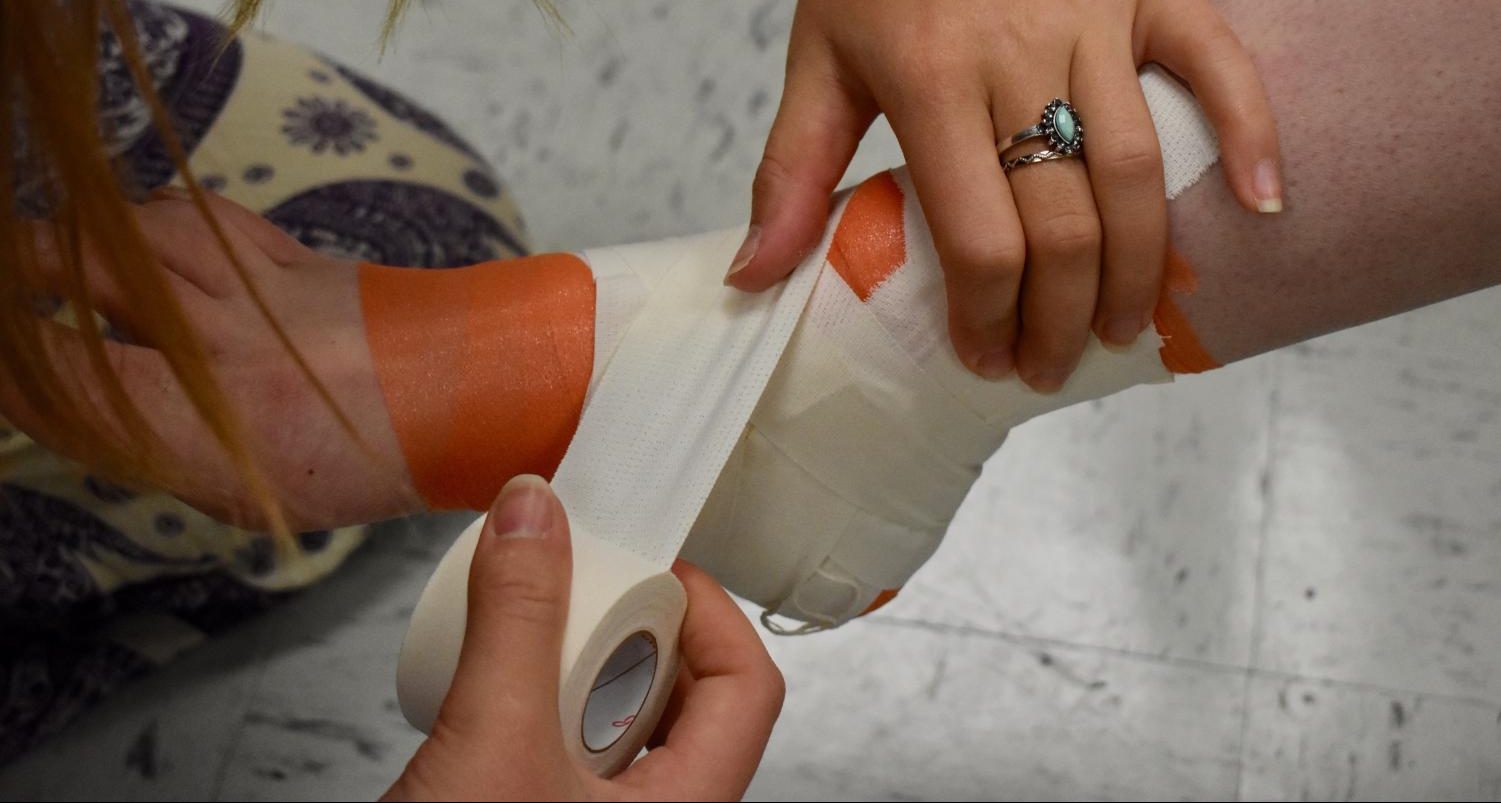Heads up! How to score without the fall
May 1, 2019
Two million injuries, 500,000 doctor visits, and 30,000 hospitalizations occur annually—all high school athletes. Though athletics gives students a chance to achieve at something or fall so deeply in love with one particular sport that they devote their lives to it, it can result in injury from a misstep or a small infraction of a rule that could end what they worked so hard for. It takes two seconds to tear a ligament or to suffer from a concussion. A multitude of injuries can occur that can reshape the future of that student; learn how to see and prevent the most common injuries to the average high school sporting teams:
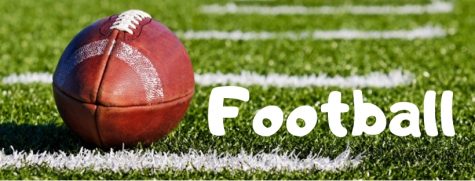
Football, a nationally popular and growing sport in all levels, creates an abundance of fans, devotion, and injuries. The combination of high speeds and full contact causes the majority of injuries football players endure. Some of the most common injuries include concussions, medial collateral ligament injuries (MCL tears), and overuse injuries, however, football results in a number of additional injuries in any location of the body due to the sheer aggressiveness of the overall sport.
A concussion occurs when a player obtains a significant blow to the head and can result in loss of consciousness, nausea, amnesia, disorientation, major headaches, or difficulty concentrating. A multitude of other symptoms can occur to this cognitively impairing physical injury. Some medicines, like acetaminophen, treat certain symptoms, like the overwhelming headaches, but the key to recovery includes prolonged rest for about two weeks to a month with limited exposure to fluorescent, bright lights and loud high pitched noises. Players must recover from a concussion with care to prevent second-impact syndrome. Obtaining a second concussion during recovery and the possibility of multiple concussions can result in permanent brain damage. A huge epidemic of concussions occurred roughly between 2005 and 2015, during the NFL trials, about chronic traumatic encephalopathy (CTE). This epidemic brought an organization to life known as Stop Sports Injuries, a tool used for the increased awareness and prevention of sports injuries.
“My first experience of a concussion, I played through it, but I had severe headaches for a good week, my ears were ringing and I was more clumsy than usual. Throughout the season I became moody all the time, which wasn’t good for myself, or my team,” senior football player Aaron Jodesty said.
A medial collateral ligament sprain occurs when a player feels pain in the medial part of the knee when hit on the lateral side. Though the severity of this injury does not compare to an anterior cruciate ligament injury, the patient must follow a six-week recovery plan to ensure maximum efficiency when put back in play. Treatment includes resting, icing, and elevating the knee as well as ibuprofen to ease the pain and swelling. If the torn ligament does not heal correctly, it will cause instability and increase the probability of re-injury.
A multitude of different overuse injuries, like patellar tendinitis, can prevent a player from playing their best or without pain, and though not extremely serious, ignoring the pain will create much more serious problems in the future. Overuse also may lead to overtraining syndrome, where a player trains beyond the ability of the body to repair.
Prevention of these disorders remains crucial to a player’s success and overall personal health. Some measures one may take to prevent these injuries and more in the sport of football include consistent strength training and stretching, obtaining a physical or a preseason evaluation, performing proper warm-up and cool-down routines, staying hydrated, wearing the properly fitted protective equipment, and tackling with the head up, not leading with one’s helmet.
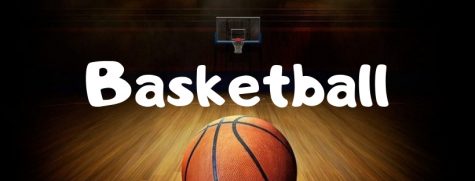
From head to toes and jammed fingers to ankle sprains, basketball, an increasingly popular sport born from peach baskets and wire into what one thinks of basketball today, offers an array of situations that may end in injury.
The ankle sprain, the most common injury in basketball, includes an injury to the lateral stabilizing ligaments of the ankle: the anterior tibiofibular ligament, anterior ligamentous complex, and the lateral ligamentous complex. This injury usually occurs when the ankle rolls inversely, often occurring during a landing especially on another player’s foot. Treatment involves a combination of ice, elevation, and anti-inflammatories, used to help with swelling and pain control, depending on the severity of the sprain.
“It was a tough experience and I have never had to deal with a lot of injuries before. It took 3 weeks to heal but unfortunately, I couldn’t get back to my original shape that I had like earlier in the season, after the season ended I rested for three more weeks and I’m close to 100% completely started training for college. My motivation is that hard work always gets me better I just think and tell myself I’ll be back from injuries even better player,” senior varsity basketball player Shota Suzuki said.
A jammed finger occurs when a ball contacts the tip of the finger compressing it towards the hand, stretching or spraining the ligaments supporting the joints: a greater force producing a more severe injury, usually causing significant swelling. This injury may result in a significant amount of pain and an inability or difficulty to bend or straighten the finger. Treatment options include surgery, depending on the severity of the injury, splinting and, buddy strapping.
Stress fractures can occur from a dramatic increase in activity level, training, or playing time. In basketball specifically, stress fractures typically occur in the foot and tibia or fibula when the muscles become fatigued and unable to absorb the shock, transferring the overload of stress to the bone, causing a crack in the bone. Treatment includes a period of immobilization, and return to play occurs when the athlete recovers fully and no longer feels any pain.
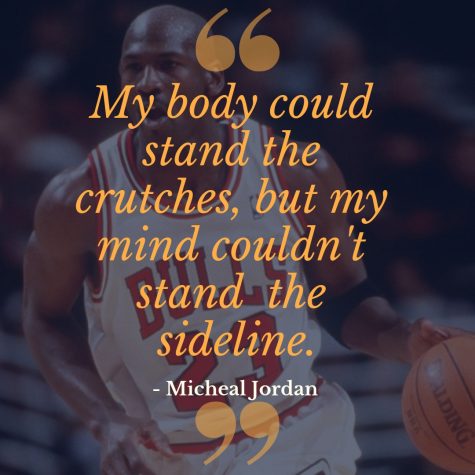
Preventing these injuries becomes almost as serious as the game itself, so one must make sure to learn different techniques to avoid injury, how to keep themselves hydrated, maintain proper fitness, and condition before returning to play after a period of inactivity. Athletes must also not succumb to the many pressures now forced on them to overtrain, because overtraining can lead to overuse injuries like stress fractures.
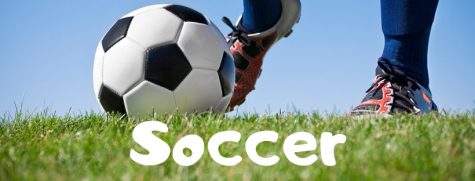
Soccer, a sport enjoyed and played by millions worldwide, traces back three thousand years, making it the most popular and one of the oldest sports the world knows today. With the number of people and the array of different climates, fields, and skill levels, injuries, although not common, do occur.
The anterior cruciate ligament (ACL) acts as a strong rope holding the leg bones together and stabilizing the knee. Impact, specifically to the outside of one’s knee, and common movements in soccer include sudden changes of direction or sudden stopping that can cause a strain or tear of the ACL: an injury that ruins futures, careers, and scholarships. This severe injury requires surgery and a 6-12 month recovery with intense physical therapy and rehabilitation.
“I have just played [soccer] for so long and it has always been a big part of my life; I just missed it so much [and] I don’t really know anything else. Recovery is not a linear process, it is not just a straight shot to improvement and you sometimes never feel like you’re getting better, but you are. It was really emotionally draining, you have good days and bad days and sometimes the bad days were really hard to get through,” senior varsity soccer player Hannah Schooler said.
One would not expect upper extremity injuries to happen in a sport where an illegality includes the use of hands, but it does still happen. The most common cause of a wrist sprain includes falling on an outstretched hand or from player to player contact when the ligaments in the wrist stretch beyond their limits or tear. These injuries can range in severity (measured in grades) depending on how much damage occurred to the ligament. Symptoms include swelling, bruising, tenderness, a feeling of warmth around the wrist, or the feeling of popping or tearing inside the wrist. Treatment includes rest and immobility.
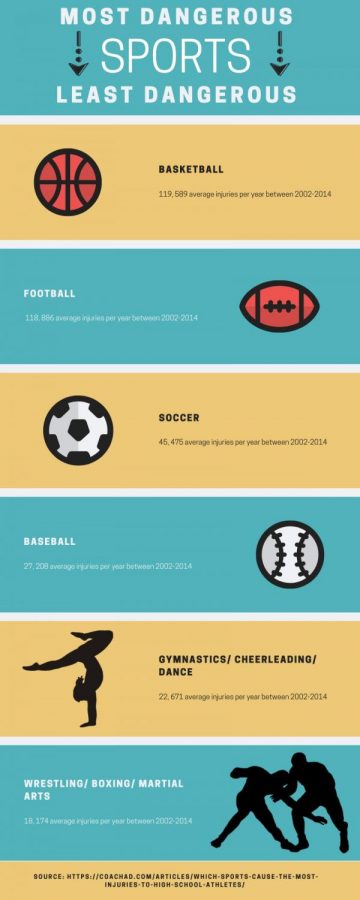
Shin splints, an inflammation of the muscles, tendons, and bone tissue around your tibia, happen to almost every soccer player and arise with the overuse of the athlete’s shins. Symptoms include pain along the inner border of the tibia and mild swelling in the same area. The pain that occurs may consist of a sharp razor-like pain or a dull and throbbing pain. Rest, ice, and stretching often help to decrease the pain, as well as trying not to overdo one’s exercise routine.
Using the right footwear and equipment, learning how to glide safely and transition swiftly on the field, and maintaining a progressive conditioning program compasses what one can do to prevent injuries in soccer. Keeping track of one’s hydration levels and overall training can also prevent injuries.
Awareness and prevention become the key to success and lack of injury in the multitude of sports that exist today; the overall awareness of one’s capabilities and limitations decreases the feeling of invincibility that most athletes obtain. By learning the body and what can occur, an athlete can strive high and maximize their athletic and physical abilities to execute their passion.
